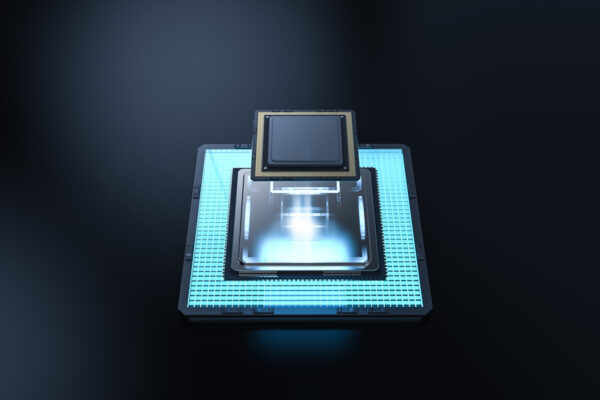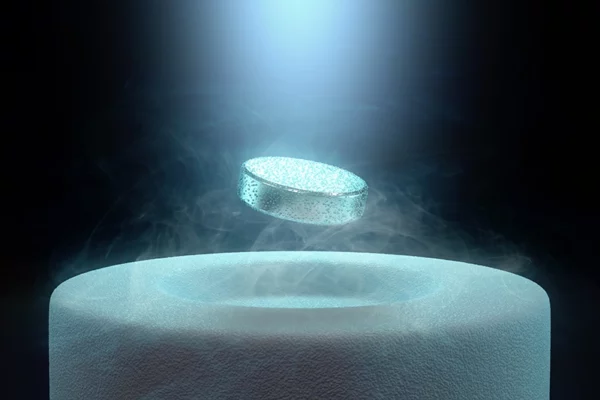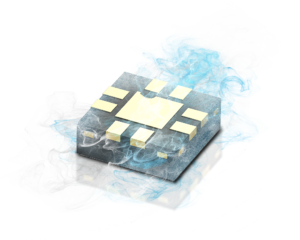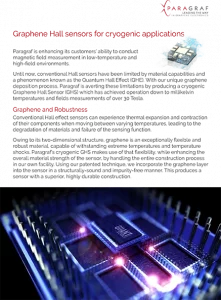Our cryogenic-ready graphene-based sensor range is the first and only Hall effect sensor range capable of measuring a range of magnetic field strengths from 10s of µT up to 30T, at temperature extremes down to the mK level. This enables users, for the first time, to increase throughput with quicker magnet mapping by removing NMR probe mapping stages.
Our cryogenic sensors also allows measurements directly in cold bore, removing the need for room temperature inserts, and enabling a quicker collection of quality data.
Products
Cryogenic – High Field
The Paragraf Cryogenic – High Field graphene Hall sensor is designed for use in ultra-low cryogenic temperatures and high field environments: it can measure magnetic fields up to the 10s of Tesla, and still operates down at mK temperatures.
Specs
Sensing Range: ± 30 T
Sensitivity (V/AT): 175
Sensitivity (V/VT): –
Min. Temp: <1K
Max. Temp: 350K
Cryogenic
The Paragraf Cryogenic graphene Hall sensor is designed for use in cryogenic environments and can operate down to a temperature of 4K. It is also suitable for measuring strong magnetic fields and has a highly linear response up to 7T.
Specs
Sensing Range: ± 7 T
Sensitivity (V/AT): 250
Sensitivity (V/VT): –
Min. Temp: 4K
Max. Temp: 350K
Cryogenic – Low Field
The Paragraf Cryogenic – Low Field graphene Hall sensor is designed for use in extreme cryogenic environments with high sensitivities. It can operate down to mK temperatures while keeping very high sensitivity.
Specs
Sensing Range: ± 0.5 T
Sensitivity (V/AT): 800
Sensitivity (V/VT): –
Min. Temp: <1K
Max. Temp: 350K
Applications
Quantum computing
Paragraf graphene-based cryogenic sensors play a crucial role in quantum computing by enabling the precise measurement and control of quantum systems at extremely low temperatures. Use cases include:
- Magnetic Field Measurement. Superconducting qubits are extremely sensitive to magnetic fields. Paragraf sensors provide valuable feedback for magnetic field cancellation or shielding to minimize unwanted interference.
- Performance characterization. Cryogenic sensors are used to characterize the performance of individual qubits or the entire quantum system. These measurements help assess the quality and reliability of the qubits and guide the development of more robust quantum computing architectures.


Magnet calibration
An increasingly significant limitation of conventional Hall sensors is their inability to be used at cryogenic temperatures due to the electronic components involved not functioning at these extremes and the changes in adhesion (because of thermal mismatch) between multiple material interfaces causing thermal drift. Paragraf’s graphene-based cryogenic sensors are the only Hall sensors to offer accurate, repeatable performance at cryogenic temperatures.
Applications include:
- Magnet R&D and manufacture
- In-situ magnetic field monitoring and field magnitude and vector verification during cryogenic experiments
- Magnetic shielding attenuation factor determination – use the same sensor for field measurement on the inside and outside of the shield
Contact sales to place your order


